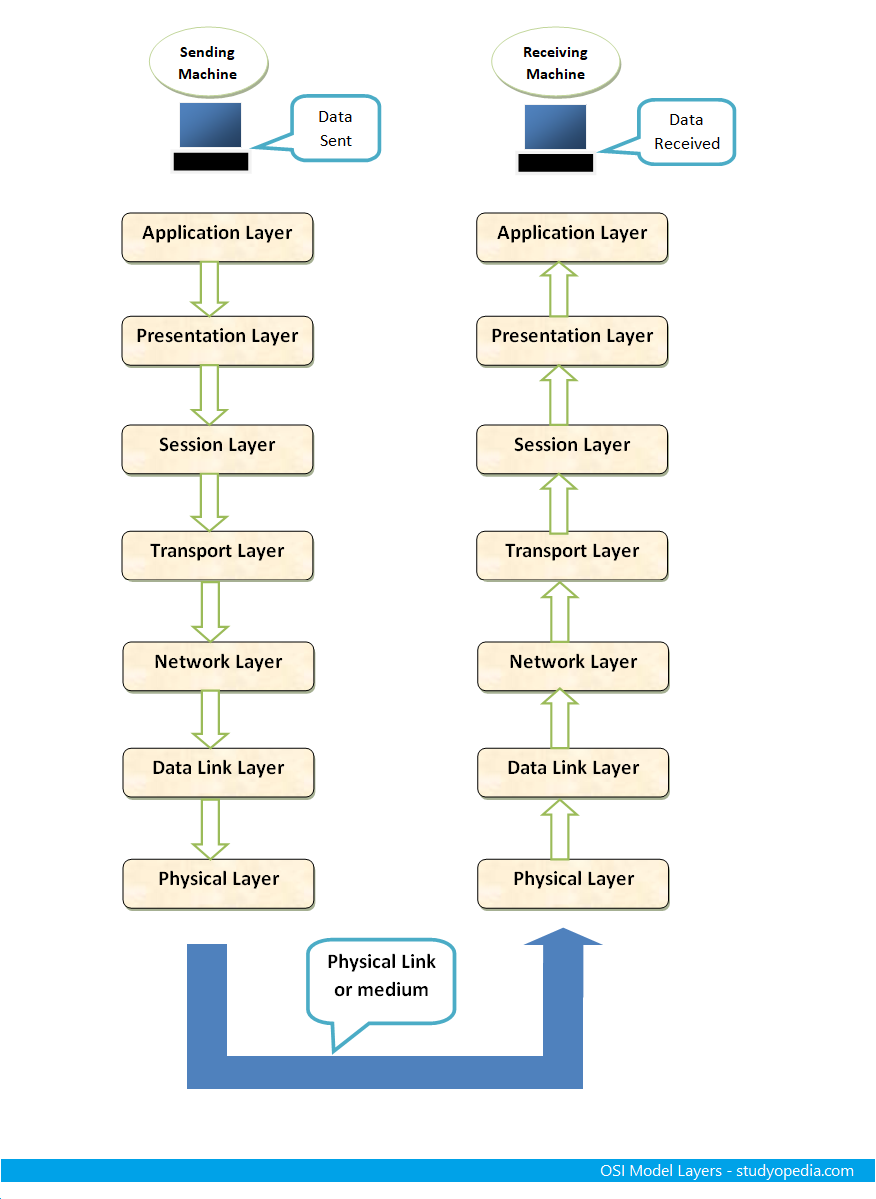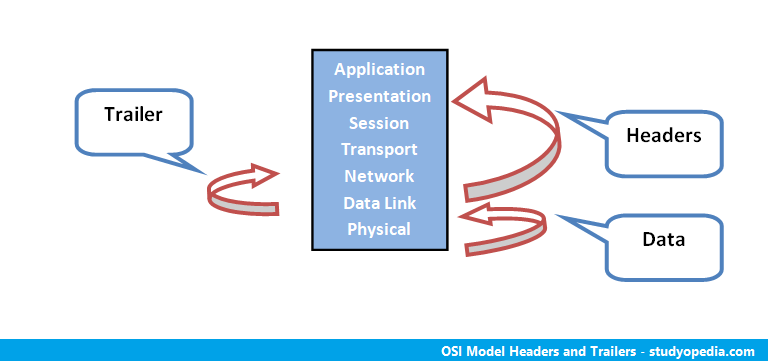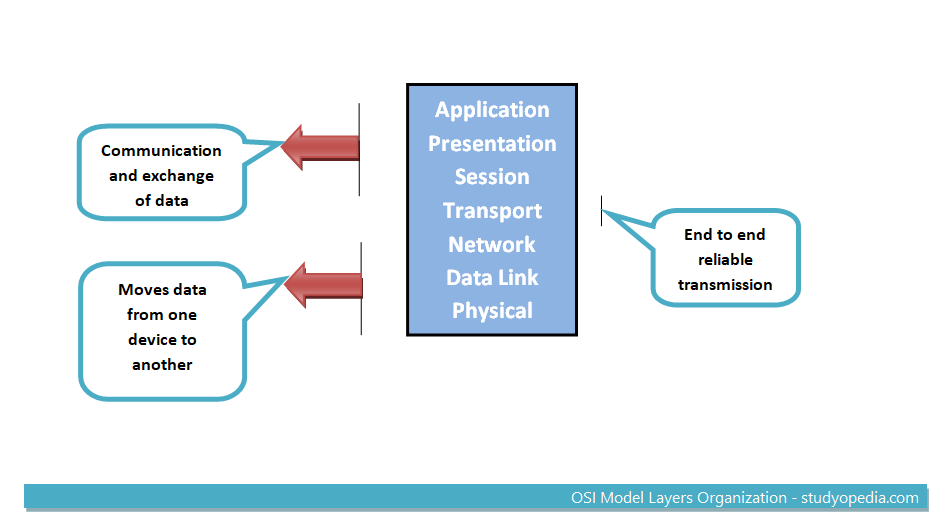25 Aug OSI Model in Computer Networks
OSI model is the Open Systems Interconnection (OSI) model, which is an ISO standard that opens communication between two different systems regardless of their underlying architecture. Do not consider it as a protocol, since it is a model in Computer Networking to understand and design flexible, robust, secure and interoperable network architecture.
What is an OSI Model
OSI model is a layered framework that has seven layers defining the sequence of moving information. Each of the layers defines the segment of the process across a network.
The OSI model has seven ordered layers, which are related to each other. Each layer is part of a process, which moves information across a network from one system to another.
The following figure shows how it works. A message is sent from sending machine to the receiving machine. The message passes through many intermediate nodes, which are the first three layers i.e. Physical, Network and Data link. These layers move data.
Every layer of OSI model defines a family of functions different from the other layers. The layers were initially created to group networking functions, which are related to each other.

In the above figure, you can see a message is sent from one device to another. The message is sent through layers of the OSI model, which also includes the intermediate nodes. Physical, Data Link and Network Layer is part of the intermediate nodes.
The model is considered flexible since each and every layer defines a family of functions different from other layers.
Peer to Peer processes
Peer to peer is a process on each system, which communicates at a given layer. Each OSI Model layer goes for the services provided by the layer just below it.
When stream of bits is passed from the sending machine, each layer adds its own information. This information is received by a layer from the layer just above it. In the same way, each layer passes the information it received from the layer above it, and the information it added, to the layer just below it. The process goes on and this information is what we call headers or trailers.
How communication happens
One device send a stream of bits to the second. The communication moves down through the layers. Each layer at the higher levels send information to the message it receives from the layer above it. The information is added in the form of headers or trailers. Then it is sent to the layer below it.
Here are the details about headers and trailers,

Headers gets added at- Layers 6, 5, 4, 3, 2
Trailer gets added at- Layer 2
How Layers are organized
The seven layers of the OSI model can be easily sub-divided into the following three parts,

Layers 1, 2, 3
These layers with physical aspect of moving data from one device to another. The three layers include, Physical, Data Link, as well as Network layers.
Layers 5, 6, 7
These layers allow different information technology systems to communicate and exchange data among unrelated software systems.
Layer 4
Layer includes the transport layer, ensuring end to end reliable transmission.
If you liked the tutorial, spread the word and share the link and our website Studyopedia with others.
For Videos, Join Our YouTube Channel: Join Now


No Comments